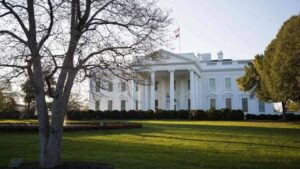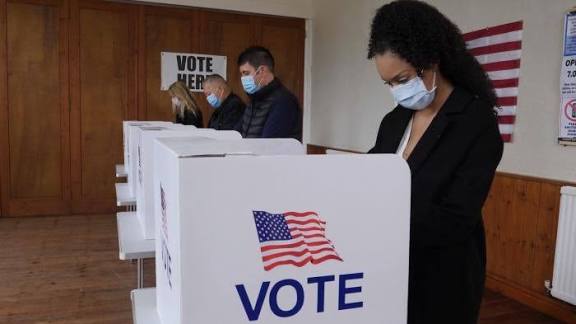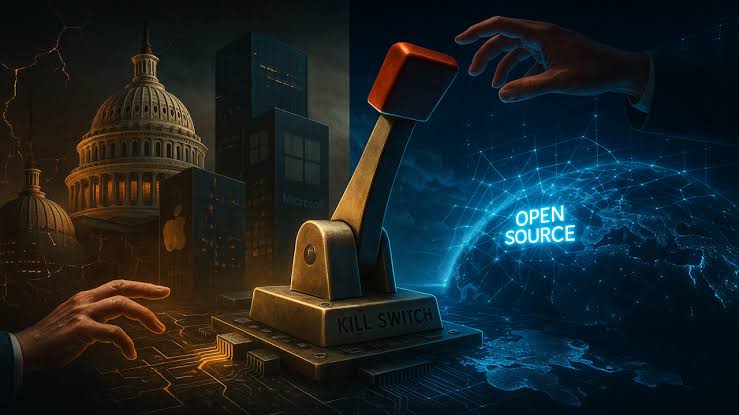White House Divided: Senior Officials Clash Over New Economic Warning

MAGA faces internal rifts on key issues. Six factions clash over the Epstein files, immigration and foreign interference ahead of the 2026 midterms. Today we will discuss about White House Divided: Senior Officials Clash Over New Economic Warning
White House Divided: Senior Officials Clash Over New Economic Warning
The White House is grappling with an internal rift as senior economic officials increasingly issue stark warnings about the fallout from the ongoing U.S. government shutdown. While some leaders lean into caution, others seek to project confidence — a split that reflects deeper policy tensions, communication breakdowns, and political risk. The discord raises serious questions not only about the economic outlook for the country but also about cohesion within the administration’s economic team.
The Shutdown and Its Economic Risks

At the heart of the division is the prolonged government shutdown, which has disrupted crucial federal operations and data collection. The White House has warned that the shutdown could delay the release of key inflation figures. Surveyors are unable to deploy to the field, depriving policymakers and markets of critical data on consumer prices.
Parallel to this, economic advisers have flagged a growing risk that the shutdown could significantly dent growth in the fourth quarter. Senior officials have stated that if the impasse continues, the U.S. could face a negative quarter, with growth potentially being cut by as much as half if the shutdown persists.
These warnings mark a shift — from early administration optimism to a more cautious, if not alarmed, tone from some of its own policy architects.
Internal Tensions: Warnings vs. Reassurances
The growing alarm from economic officials is not universally embraced within the White House. On one side are key figures who emphasize the very real costs and spillover effects of a protracted shutdown. They warn that delayed agency processes — ranging from small-business lending to contract awards — could suppress consumer spending and business investment.
On the other side, there are senior officials and spokespeople who continue to defend the administration’s broader economic narrative. Despite mounting volatility, they maintain that the long-term trajectory remains strong. Others argue that recalibrating the messaging to focus on risk could undercut market confidence and fuel speculation — something the White House is wary of, especially in a politically charged environment.
This split is not just about economic forecasting. It underscores a deeper fault line: how to balance realism with political messaging, and whether prioritizing transparency now could imperil broader goals.
The Fallout: Credibility, Markets, and Public Confidence
The division within the White House comes at a perilous time. Without consistent economic data flowing, markets could become more jittery. The shutdown has already disrupted several monthly reports, including employment, trade, and retail sales. Every additional week of shutdown costs the economy billions in GDP.
Analysts warn that this information blackout could impair business decisions on hiring and investment. When firms lack reliable data, they tend to pull back on long-term commitments, freezing capital expenditures and severely hindering growth. That, in turn, could exacerbate the very risks senior White House officials are cautioning about — a self-perpetuating downward spiral.
At the same time, public confidence could erode. In a political context already fraught with instability, the perception that the White House itself is not aligned heightens uncertainty. If Americans believe that their own economic advisers are at odds, their faith in the administration’s ability to manage a crisis could weaken.
Policy Risk: Trade, Inflation, and the Cost of Unity
Beyond the immediate shutdown-related economic risk, the internecine conflict also highlights ideological divides on trade and macroeconomic policy.
President Trump’s trade strategy — especially his aggressive use of reciprocal tariffs — has drawn both praise and criticism within his own ranks. While the administration touts these as powerful levers to protect American industries, some business leaders and even White House economists privately worry they may backfire, triggering inflation or choking off supply chains.
The tension is exacerbated by communication challenges. Senior officials report being frequently left out of key decisions or blindsided by announcements. When contradictory messages emerge — for instance, on tariff proposals — market confidence wavers, sowing deeper discord internally.
Such policy risk isn’t trivial. If trade tensions escalate further, the very economic gains the administration claims could be undone. At the same time, the more hawkish voices within the White House argue that toughness on trade is essential to preserving long-term economic sovereignty.
Credibility and the Statistical System
A particularly sensitive dimension of the divide involves trust in economic data and the institutions that produce them.
The firing of the Bureau of Labor Statistics head earlier this year raised serious concerns, even among White House allies. Former BLS commissioners warned that such dismissals risked undermining confidence in U.S. economic statistics. The backlash sharpened internal tensions, with some officials publicly defending the move and others privately worrying about the long-term damage to the statistical system.
Now, with the shutdown disrupting data collection — including Consumer Price Index releases — there is renewed anxiety that critical economic indicators may be delayed indefinitely. If prominent economic voices within the White House warn that data distortions are likely, it deepens fears that future policy decisions will rest on shaky ground.
Political Calculus: Messaging vs. Risk Management
Beyond economics, the infighting reflects a political calculation: how to manage messaging without alienating constituencies.
Pro-reassurance voices argue that the White House should avoid fueling panic. They fear that emphasizing the risks of a continued shutdown could spook markets, hurt consumer sentiment, and undercut the administration’s broader message of strength and control. Moreover, projecting over-optimism helps maintain political momentum and supports long-term goals — such as advancing trade deals, deregulation, or infrastructure priorities.
Conversely, the warning camp believes that candor pays. They argue that acknowledging the risk early and clearly can help stabilize expectations, give businesses time to adjust, and potentially pressure Congress to resolve the impasse. It is a delicate balance: being too alarmist risks destabilizing markets; being too sanguine risks underpreparing for a downturn.
Implications for Congress and Negotiations
The White House’s internal schism also has ramifications for its negotiations with Congress. If senior officials publicly warn of dire economic consequences, they could put pressure on lawmakers — particularly those who oppose funding measures — to compromise. The more tangible and serious the threat, the stronger the leverage.
At the same time, mixed messages may weaken the administration’s hand. If different parts of the White House present contradictory assessments, congressional Republicans and Democrats may question the unity and credibility of the demand for funding. That undermines not just the economic argument but the political strategy.
Risks to Long-Term Economic Strategy
The division within the White House is not just a shutdown issue; it threatens to undermine broader long-term economic strategy.
Trade Diplomacy: If conflicting voices undermine the coherence of the White House’s trade narrative, foreign partners may become less willing to strike deals, weakening the perceived leverage of reciprocal tariff threats.
Monetary Policy Influence: Skepticism about data quality — especially CPI and employment — could complicate communications with the Federal Reserve. If the White House cannot reliably interpret or trust economic indicators, its ability to advocate for particular monetary stances may diminish.
Investor Confidence: Continued infighting risks eroding investor trust not just in the short-term, but in the administration’s capacity to manage complex economic transitions.
Institutional Trust: The credibility of statistical institutions is central to both policy planning and public trust. If internal conflicts compromise their perceived independence, it could have long-term negative consequences.
External Observers and Analyst Views
Observers outside Washington are watching this internal divide closely. Economists warn that the shutdown’s economic risk could be more profound than what the White House is signaling publicly. A prolonged impairment of data flows — especially on inflation — could lead to knee-jerk policy reactions later.
Meanwhile, business leaders are growing increasingly frustrated by inconsistent messaging. Some are calling for more clarity, especially on trade, so they can plan capital investments and hiring more confidently. Political analysts argue that the White House’s split may reflect not just a policy debate but a generational or philosophical divide: between executives who favor risk management and realism, and political operatives who prioritize narrative strength and messaging discipline.
Potential Paths Forward
Given the stakes, the White House has a few possible paths to manage the divide:
Unified Economic Task Force
Create a joint task force that brings together key economic voices to reconcile assessments, align public messaging, and create unified crisis communications.Transparent Communication Strategy
Acknowledge risks openly but pair warnings with a roadmap: how the White House plans to manage spillovers, restore data flow, and mitigate economic damage if the shutdown persists.Congressional Engagement
Use internal warnings as leverage in negotiations: present a coherent, evidence-based case to Congress, emphasizing the real economic costs of continued standoff.Strengthen Statistical Institutions
Reaffirm commitment to independent statistical agencies. Consider temporary administrative measures to protect their funding and autonomy to restore public and investor confidence.Scenario Planning
Prepare contingency plans for various shutdown durations: best-case, moderate-risk, worst-case. Each scenario should include steps to manage data blackouts, market volatility, and fiscal stress.
Risks and Challenges to These Paths
Implementing any of these strategies is not simple. There are real risks and political constraints:
Credibility Trade-Offs: Being too transparent about risks may spook markets, but downplaying them risks later accusations of mismanagement or cover-up.
Political Pressure: Some senior political advisers may resist a more cautious public tone, arguing it undermines the administration’s narrative strength.
Institutional Constraints: Even with a task force, reconciling deeply held policy biases will be challenging.
Congressional Gridlock: Using warnings as leverage works only if Congress responds, but entrenched partisan positions may blunt the strategy.
Long-Term Trust Repair: Repairing confidence in statistical agencies may require sustained commitment and structural reforms.
Conclusion
The image of a unified White House, confidently steering the U.S. economy, is being tested. The government shutdown has exposed deep fault lines within the administration’s economic team — between those sounding the alarm and those pushing reassurance.
This internal division is more than a temporary schism. It reflects fundamental strategic questions: Should the White House prioritize transparency and risk mitigation, or maintain a bullish narrative to project strength? How can it balance short-term damage with long-term credibility? And crucially, how will this rift affect its ability to negotiate with Congress and guide the economy out of its current peril?
As the shutdown continues, the stakes are only rising. If the competing voices within the White House don’t find a way to reconcile, the economic consequences could be significant — not just for markets and growth, but for institutional trust, governance, and the political fabric of the administration itself.
How useful was this post?
Click on a star to rate it!
Average rating 0 / 5. Vote count: 0
No votes so far! Be the first to rate this post.
About the Author
usa5911.com
Administrator
Hi, I’m Gurdeep Singh, a professional content writer from India with over 3 years of experience in the field. I specialize in covering U.S. politics, delivering timely and engaging content tailored specifically for an American audience. Along with my dedicated team, we track and report on all the latest political trends, news, and in-depth analysis shaping the United States today. Our goal is to provide clear, factual, and compelling content that keeps readers informed and engaged with the ever-changing political landscape.




